
Brian Wilson Aldiss was an English writer, artist and anthology editor, best known for science fiction novels and short stories. His byline reads either Brian W. Aldiss or simply Brian Aldiss, except for occasional pseudonyms during the mid-1960s.
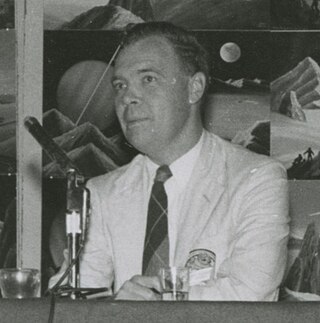
Harry Clement Stubbs, better known by the pen name Hal Clement, was an American science fiction writer and a leader of the hard science fiction subgenre. He also painted astronomically oriented artworks under the name George Richard.
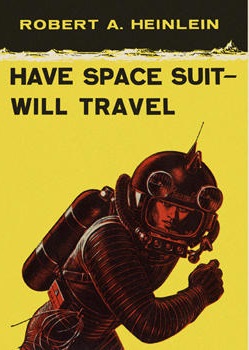
Have Space Suit—Will Travel is a science fiction novel for young readers by American writer Robert A. Heinlein, originally serialized in The Magazine of Fantasy & Science Fiction and published by Scribner's in hardcover in 1958. The last Heinlein novel to be published by Scribner's, it was nominated for a Hugo Award in 1959 and won the Sequoyah Children's Book Award for 1961. Heinlein's engineering expertise enabled him to add realistic detail; during World War II, he had been a civilian aeronautics engineer at a laboratory which developed pressure suits for use at high altitudes.

Joe William Haldeman is an American science fiction author.
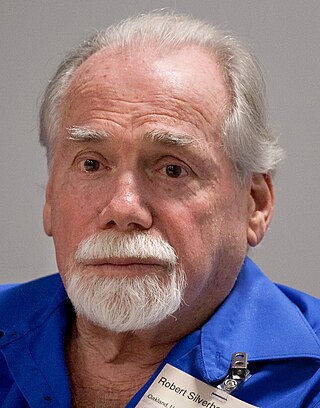
Robert Silverberg is an American author and editor, best known for writing science fiction. He is a multiple winner of both Hugo and Nebula Awards, a member of the Science Fiction and Fantasy Hall of Fame, and a Grand Master of SF. He has attended every Hugo Award ceremony since the inaugural event in 1953.

Robert James Sawyer is a Canadian and American science fiction writer. He has had 24 novels published and his short fiction has appeared in Analog Science Fiction and Fact, Amazing Stories, On Spec, Nature, and numerous anthologies. He has won many writing awards, including the best-novel Nebula Award (1995), the best-novel Hugo Award (2003), the John W. Campbell Memorial Award (2006), the Robert A. Heinlein Award (2017), and more Aurora Awards than anyone else in history.
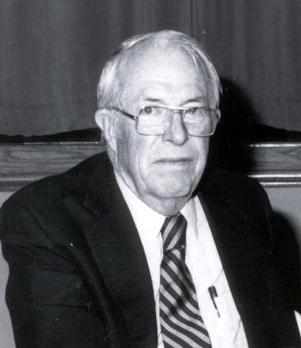
John Stewart Williamson, who wrote as Jack Williamson, was an American science fiction writer, one of several called the "Dean of Science Fiction". He is also credited with one of the first uses of the term genetic engineering. Early in his career he sometimes used the pseudonyms Will Stewart and Nils O. Sonderlund.

Rocannon's World is a science fiction novel by American writer Ursula K. Le Guin, her literary debut. It was published in 1966 as an Ace Double, along with Avram Davidson's The Kar-Chee Reign, following the tête-bêche format. Though it is one of Le Guin's many works set in the universe of the technological Hainish Cycle, the story itself has many elements of heroic fantasy. The hero Gaveral Rocannon encounters lords who live in castles and wield swords, and other races much like fairies and gnomes, in his travels on a backward planet.

"The Ugly Little Boy" is a science fiction short story by American writer Isaac Asimov. The story first appeared in the September 1958 issue of Galaxy Science Fiction under the title "Lastborn", and was reprinted under its current title in the 1959 collection Nine Tomorrows. The story deals with a Homo neanderthalensis child which is brought to the future by means of time travel. Robert Silverberg later expanded it into a novel with the same title published in 1992.
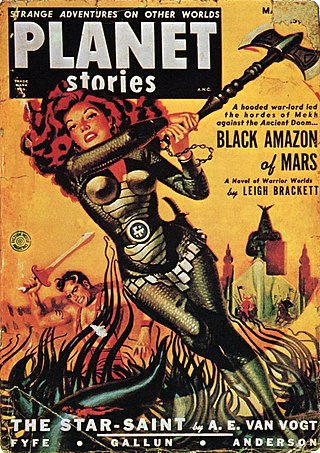
Planet Stories was an American pulp science fiction magazine, published by Fiction House between 1939 and 1955. It featured interplanetary adventures, both in space and on some other planets, and was initially focused on a young readership. Malcolm Reiss was editor or editor-in-chief for all of its 71 issues. Planet Stories was launched at the same time as Planet Comics, the success of which probably helped to fund the early issues of Planet Stories. Planet Stories did not pay well enough to regularly attract the leading science fiction writers of the day, but occasionally obtained work from well-known authors, including Isaac Asimov and Clifford D. Simak. In 1952 Planet Stories published Philip K. Dick's first sale, and printed four more of his stories over the next three years.

This is a bibliography of works by American writer John W. Campbell Jr.

The Queen of Zamba is a science fiction novel by American writer L. Sprague de Camp, the first book of his Viagens Interplanetarias series and its subseries of stories set on the fictional planet Krishna. It was written between November 1948 and January 1949 and first published in the magazine Astounding Science Fiction as a two-part serial in the issues for August and September 1949. It was first published in book form as a paperback by Ace Books in 1954 as an "Ace Double" issued back-to-back with Clifford D. Simak's novel Ring Around the Sun. This version was editorially retitled Cosmic Manhunt and introduced a number of textual changes disapproved by the author. The novel was first issued by itself in another paperback edition under the title A Planet Called Krishna, published in England by Compact Books in 1966. A new paperback edition restoring the author's preferred title and text and including the Krishna short story "Perpetual Motion" was published by Dale Books in 1977. This edition was reprinted by Ace Books in 1982 as part of the standard edition of the Krishna novels. The novel has been translated into German, French, Italian, Czech, and Polish. An E-book edition was published by Gollancz's SF Gateway imprint on September 29, 2011 as part of a general release of de Camp's works in electronic form.

The Sky People is an alternate history science fiction novel by American writer S. M. Stirling. It was first published by Tor Books in hardcover in November 2006, with a book club edition co-published with the Science Fiction Book Club following in December of the same year. Tor issued paperback, ebook, and trade paperback editions in October 2007, April 2010, and May 2010 respectively. Audiobook editions were published by Tantor Media in January 2007.
Lafayette Ronald Hubbard, better known as L. Ron Hubbard, was an American pulp fiction author. He wrote in a wide variety of genres, including science fiction, fantasy, adventure fiction, aviation, travel, mystery, western, and romance. His United States publisher and distributor is Galaxy Press. He is perhaps best known for his self-help book, the #1 New York Times bestseller Dianetics: The Modern Science of Mental Health, and as the founder of the Church of Scientology.
The anthropologist Leon E. Stover says of science fiction's relationship to anthropology: "Anthropological science fiction enjoys the philosophical luxury of providing answers to the question "What is man?" while anthropology the science is still learning how to frame it". The editors of a collection of anthropological SF stories observed:
Anthropology is the science of man. It tells the story from ape-man to spaceman, attempting to describe in detail all the epochs of this continuing history. Writers of fiction, and in particular science fiction, peer over the anthropologists' shoulders as the discoveries are made, then utilize the material in fictional works. Where the scientist must speculate reservedly from known fact and make a small leap into the unknown, the writer is free to soar high on the wings of fancy.

"The Gnarly Man" is a science fiction story by American writer L. Sprague de Camp, about an apparently immortal Neanderthal Man surviving into the present day.

Two Complete Science-Adventure Books was an American pulp science fiction magazine, published by Fiction House, which lasted for eleven issues between 1950 and 1954 as a companion to Planet Stories. Each issue carried two novels or long novellas. It was initially intended to carry only reprints, but soon began to publish original stories. Contributors included Isaac Asimov, Robert A. Heinlein, Arthur C. Clarke, Poul Anderson, John Brunner, and James Blish. The magazine folded in 1954, almost at the end of the pulp era.

"The Blue Giraffe" is a science fiction short story on the concept of mutation by American writer L. Sprague de Camp. It was first published in the magazine Astounding Science-Fiction for August, 1939. It appeared in book form in the anthology Adventures in Time and Space and later in the anthologies World of Wonder, The Science Fiction Bestiary, Androids, Time Machines and Blue Giraffes, Isaac Asimov Presents the Great Science Fiction Stories: Volume 1, 1939, Isaac Asimov Presents The Golden Years of Science Fiction, and An Anthropomorphic Century. The story has been translated into Italian, French and German.
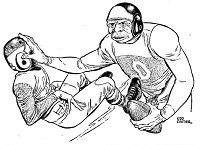
"Throwback" is a classic science fiction short story featuring atavism by L. Sprague de Camp. It was first published in the magazine Astounding Science Fiction for March 1949. It first appeared in book form in the collection A Gun for Dinosaur and Other Imaginative Tales ; it later appeared in the anthology Apeman, Spaceman. The story has been translated into Italian and German.
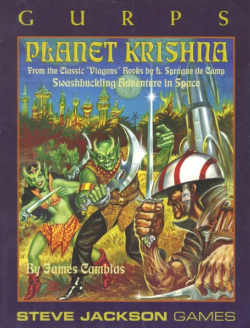
GURPS Planet Krishna is a role-playing game supplement published by Steve Jackson Games (SJG) in 1997 that helps a gamemaster design a GURPS campaign using the Viagens Interplanetarias science fiction setting of L. Sprague de Camp.


















